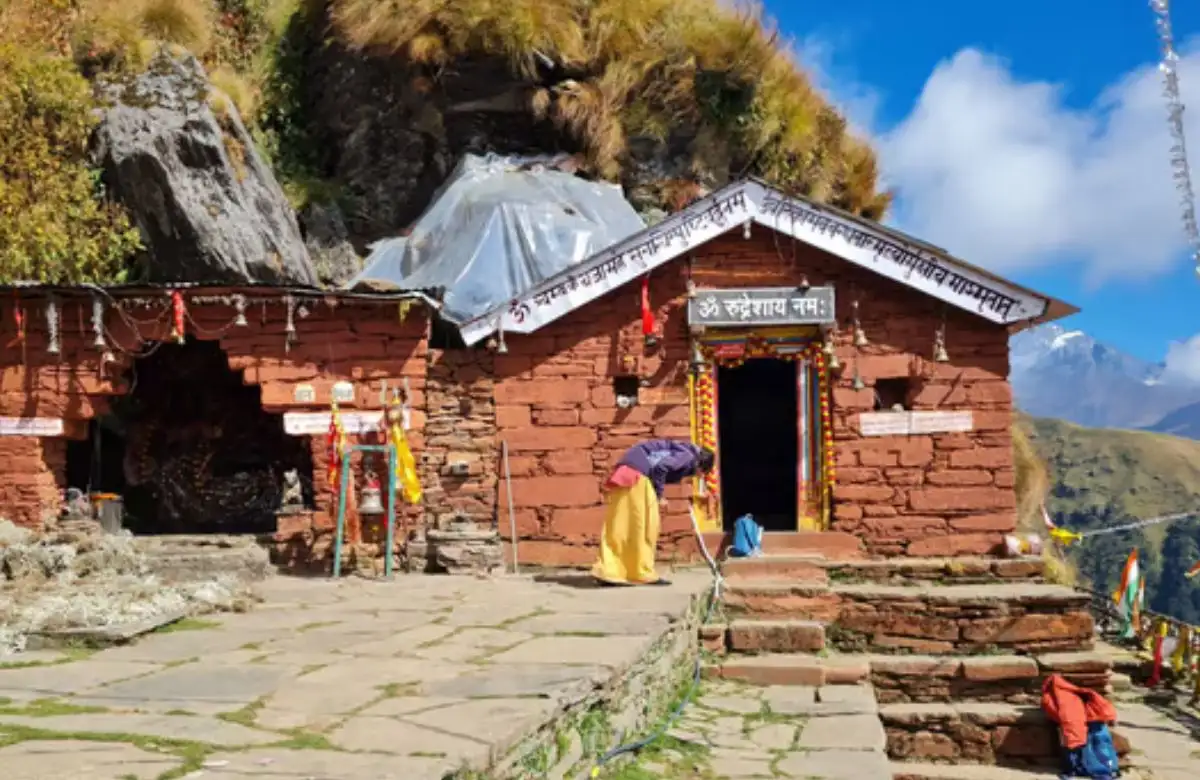Panch Kedar Temples in Uttarakhand: Complete Spiritual Travel Guide

Get in touch with our Staff members and get discounted offers for your trip.


Tucked away in the majestic Garhwal Himalayas of Uttarakhand, the Panch Kedar temples are a sacred collection of five Shiva temples that hold immense significance for devotees, trekkers, and spiritual seekers alike. Rooted deeply in the legends of the Mahabharata and the mysticism of Lord Shiva, these ancient shrines—Kedarnath, Tungnath, Rudranath, Madhyamaheshwar, and Kalpeshwar—are collectively known as Panch Kedar, meaning "Five Kedars." Together, they form one of the most revered pilgrimage circuits in India, offering not only divine blessings but also soul-stirring views of snow-clad peaks, alpine meadows, and Himalayan villages.
The story of Panch Kedar traces back to the Pandavas, the heroes of the epic Mahabharata. After the Kurukshetra war, the Pandavas sought Lord Shiva’s blessings to atone for the sins of killing their kin. Shiva, unwilling to forgive them easily, disguised himself as a bull and hid in the Garhwal region. When the Pandavas tried to catch him, the bull vanished into the ground, and its body parts reappeared at five different locations—each of which became a temple:
Hump appeared in Kedarnath
Arms appeared in Tungnath
Face appeared in Rudranath
Navel and stomach emerged in Madhyamaheshwar
Hair surfaced in Kalpeshwar
These five sites are now the Panch Kedar temples, forming a unique Shaivite pilgrimage route in Uttarakhand.
Altitude: 3,583 m
Trek Distance: 16 km from Gaurikund
The most prominent of the Panch Kedar shrines, Kedarnath Temple, is dedicated to Lord Shiva in the form of a conical lingam, symbolizing the hump of the divine bull. Situated at the base of the Kedarnath peak, it is one of the 12 Jyotirlingas of India and attracts lakhs of devotees every year during the Char Dham Yatra. Rebuilt after the devastating floods of 2013, the temple is a testimony to spiritual faith and natural resilience.
Part of Char Dham Yatra of Uttarakhand
Picturesque setting near Mandakini River
Opens in May and closes in November
Altitude: 3,680 m
Trek Distance: 3.5 km from Chopta
Located in the Rudraprayag district, Tungnath is the highest Shiva temple in the world. It is believed to be where Lord Shiva’s arms appeared. Easily accessible via a short scenic trek from Chopta, the temple is a favorite among both pilgrims and adventure seekers. Just above Tungnath lies Chandrashila Peak, which offers panoramic views of Himalayan giants like Nanda Devi, Trishul, and Chaukhamba.
Easiest trek among Panch Kedar
Best time to visit: April to November
Ideal for beginner trekkers and nature lovers
Altitude: 2,286 m
Trek Distance: 20 km (via Sagar Village or Mandal)
Rudranath is one of the most mystical Panch Kedar temples, where the face of Lord Shiva is said to have appeared. Unlike other temples, Rudranath lies nestled in a dense rhododendron forest and alpine meadows known as Bugyals. Surrounded by towering Himalayan peaks like Nanda Devi, Hathi Parvat, and Trishul, the trail is longer and more challenging, making it ideal for serious trekkers and seekers of solitude.
Serene and offbeat pilgrimage
Requires moderate to difficult trekking
Home to sacred kunds like Surya Kund and Chandra Kund
Altitude: 3,289 m
Trek Distance: 16 km from Ransi Village
Located in a remote valley surrounded by lush greenery and Himalayan ridges, Madhyamaheshwar is where the navel (madhya) of Lord Shiva is worshipped. The temple is built in classic North Indian style and remains open only during the summer months. The trek to Madhyamaheshwar is both scenic and serene, with villages like Gaundhar and Bantoli dotting the trail.
Quiet and spiritually uplifting location
Stunning views of Kedarnath, Chaukhamba, and Mandani peaks
An ideal destination for spiritual trekking
Altitude: 2,200 m
Trek Distance: 2 km from Urgam Valley
Located in the beautiful Urgam Valley, Kalpeshwar is the only Panch Kedar temple that remains open throughout the year. Here, devotees worship the hair (jata) of Lord Shiva. The temple is easily accessible from Helang on the Badrinath road and offers a short and pleasant trek through terraced fields and forests. It is the smallest in size but holds immense spiritual value.
Year-round access
Lesser-known yet highly peaceful shrine
Perfect for a short spiritual retreat
The Panch Kedar pilgrimage is not just a religious journey—it is a spiritual detox. Traversing through these five temples is believed to cleanse the soul, fulfill wishes, and bring one closer to Moksha (liberation). The circuit is often completed in one journey, covering the temples in the traditional sequence: Kedarnath → Tungnath → Rudranath → Madhyamaheshwar → Kalpeshwar.
Best Time to Visit: May to October (except Kalpeshwar, which is open all year)
Base Locations: Rishikesh, Rudraprayag, Ukhimath, Helang, Gopeshwar
Transportation: Connected by road until base villages; trekking is essential
Duration: 12–15 days for full Panch Kedar circuit
Accommodation: GMVN guest houses, basic lodges, and local homestays available
Permit: No special permits required (but always check local weather and guidelines)
A journey through the Panch Kedar temples in Uttarakhand is more than a pilgrimage—it’s a divine trek through the heart of the Himalayas, connecting spirituality with adventure. Each temple holds its unique charm, history, and spiritual power. Whether you seek inner peace, thrilling treks, or ancient tales of Shiva, the Panch Kedar Yatra offers a life-transforming experience in the lap of nature and divinity.
Q. What is the order of visiting Panch Kedar?
A. The traditional order is Kedarnath, Tungnath, Rudranath, Madhyamaheshwar, and Kalpeshwar.
Q. Is the Panch Kedar Yatra difficult?
A. Moderate to difficult. Kedarnath and Tungnath are easier; Rudranath and Madhyamaheshwar require more effort.
Q. Can we visit all Panch Kedar temples in one trip?
A. Yes, with proper planning and physical readiness, you can cover all five temples in a single 12–15 day itinerary.
Q. Which is the easiest Panch Kedar temple to visit?
A. Kalpeshwar is the easiest and can be visited year-round with a short trek.